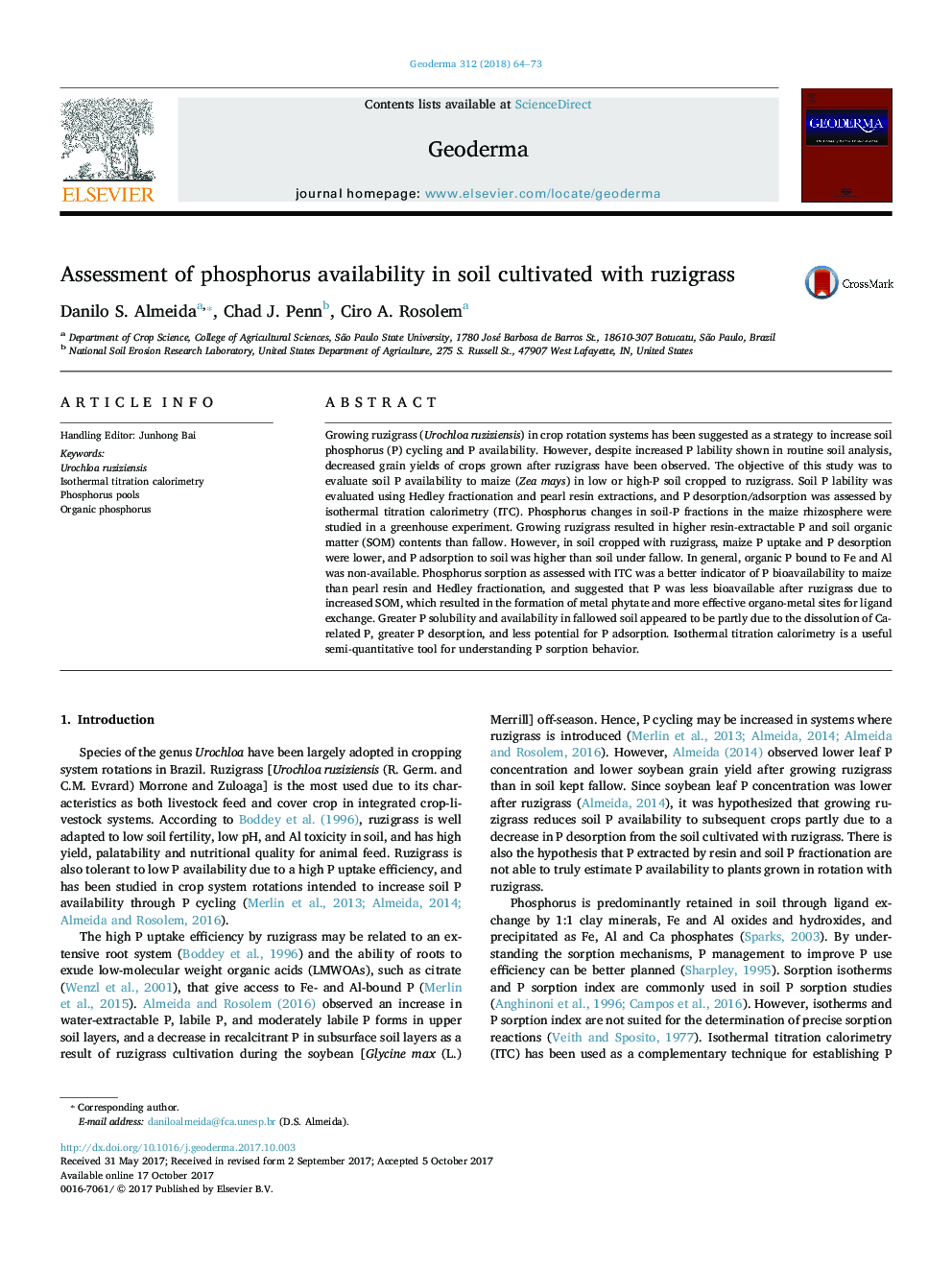| Article ID | Journal | Published Year | Pages | File Type |
|---|---|---|---|---|
| 5770216 | Geoderma | 2018 | 10 Pages |
â¢The use of ruzigrass as cover crop may affect soil P availability in the long-term.â¢Decreased P uptake of maize grown after ruzigrass was observed.â¢Isothermal titration calorimetry was a useful tool to indicate soil P availability.â¢Ruzigrass may impact P forms and availability through increasing SOM.
Growing ruzigrass (Urochloa ruziziensis) in crop rotation systems has been suggested as a strategy to increase soil phosphorus (P) cycling and P availability. However, despite increased P lability shown in routine soil analysis, decreased grain yields of crops grown after ruzigrass have been observed. The objective of this study was to evaluate soil P availability to maize (Zea mays) in low or high-P soil cropped to ruzigrass. Soil P lability was evaluated using Hedley fractionation and pearl resin extractions, and P desorption/adsorption was assessed by isothermal titration calorimetry (ITC). Phosphorus changes in soil-P fractions in the maize rhizosphere were studied in a greenhouse experiment. Growing ruzigrass resulted in higher resin-extractable P and soil organic matter (SOM) contents than fallow. However, in soil cropped with ruzigrass, maize P uptake and P desorption were lower, and P adsorption to soil was higher than soil under fallow. In general, organic P bound to Fe and Al was non-available. Phosphorus sorption as assessed with ITC was a better indicator of P bioavailability to maize than pearl resin and Hedley fractionation, and suggested that P was less bioavailable after ruzigrass due to increased SOM, which resulted in the formation of metal phytate and more effective organo-metal sites for ligand exchange. Greater P solubility and availability in fallowed soil appeared to be partly due to the dissolution of Ca-related P, greater P desorption, and less potential for P adsorption. Isothermal titration calorimetry is a useful semi-quantitative tool for understanding P sorption behavior.
